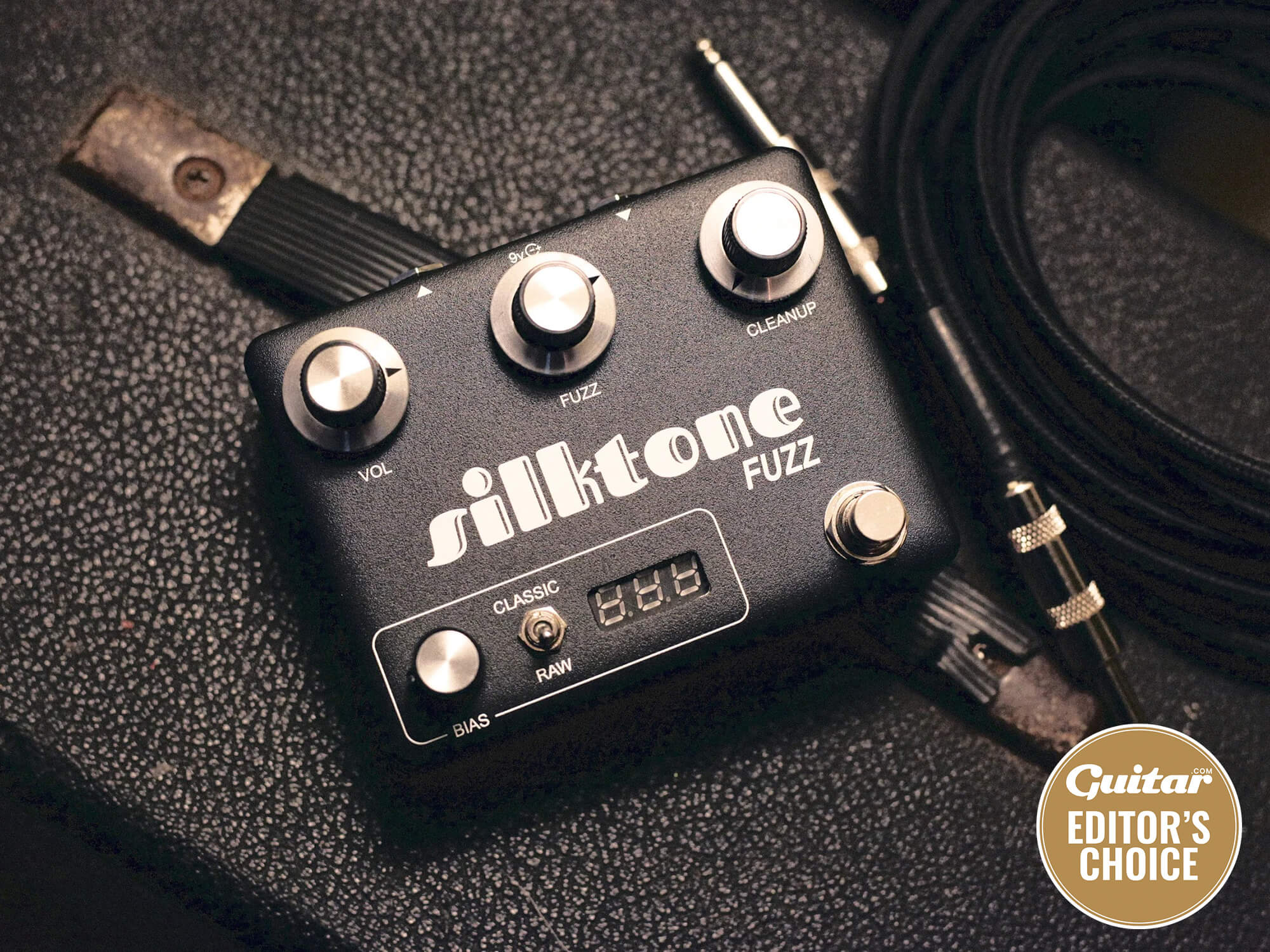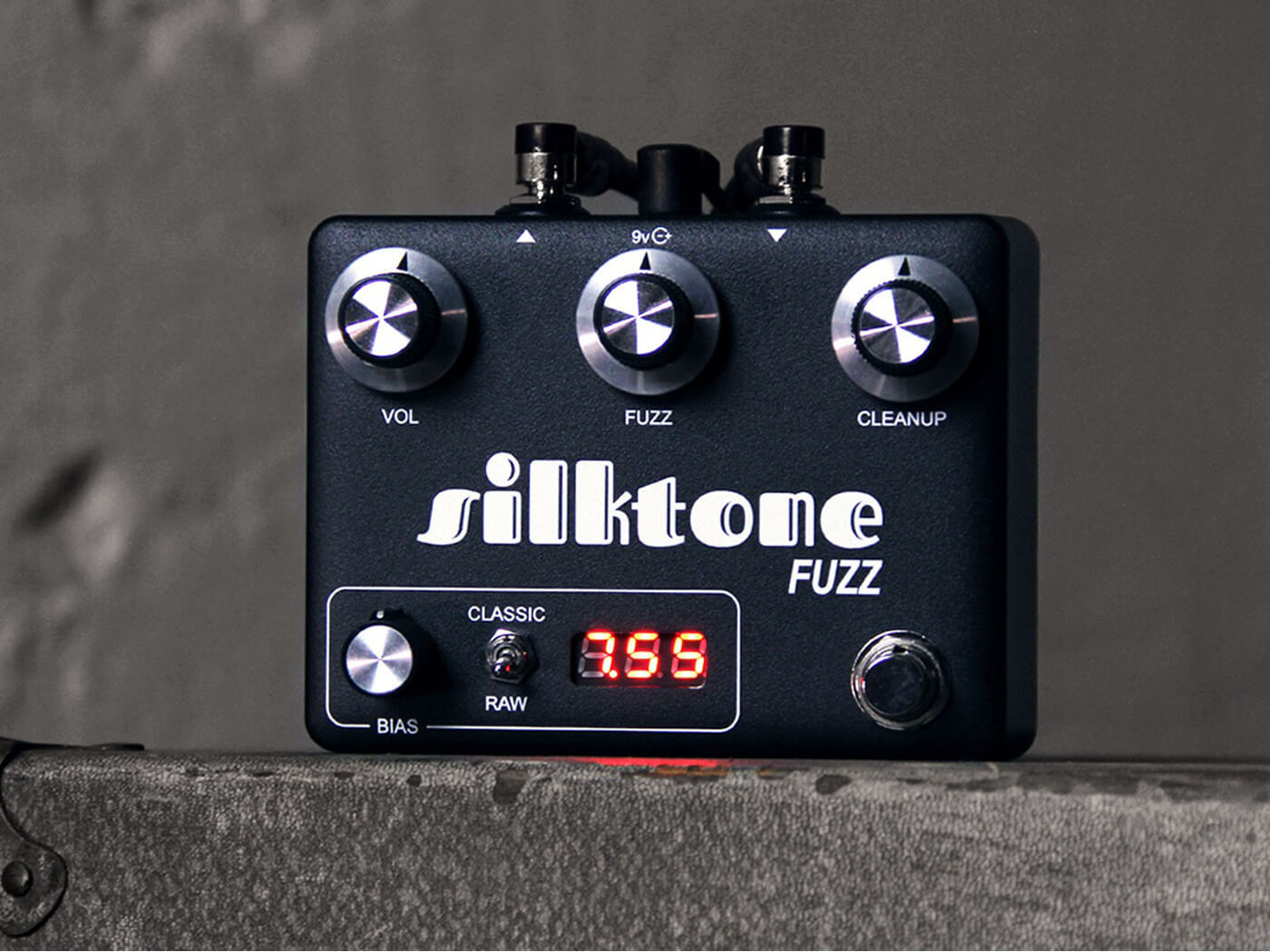Related Tags
Silktone Fuzz review: Vintage germanium filth with added number-tweaking
This American boutique unit harnesses those famously flaky transistors by letting you dial up whatever style of rich, rough or gated fuzz you desire.

Review Overview
Our rating
9
Our verdict
It’s a fuzzy old world at the moment, as pedal manufacturers large and small vie for our attention with a cornucopia of speaker-shredding, Velcro-tearing saw-wave wonders. One aspect of these delightful textures that can be difficult to tame, however, is the often mercurial nature of old-school germanium inner workings.
Enter Californian company Silktone, whose new Fuzz is based around a pair of germanium transistors arranged in the classic Fuzz Face / Tone Bender Mk1.5 topology. The difference is that this pedal has a bias knob coupled with an in-built multimeter, whose friendly little digital display will help you dial in an array of delicious fuzzy flavours.
Don’t be deceived by the relatively spartan control panel – all is not as it seems. While the volume knob is self-explanatory, Silktone recommends that you start by diming the Fuzz knob and then press the Cleanup knob into service for its stated purpose.
The aforementioned bias control – the heart of the machine – sits in the bottom left corner, adjacent to a tone-shaping toggle labelled ‘classic’ and ‘raw’. This knob is easily mistaken for a footswitch, and sits exactly where a second stomper would go – so please be careful with the placement of your immaculate ostrich-leather driving loafers.

In use
Fuzz enthusiasts often rely on an amp with some midrange bite. So we line up a Vox AC15 and a Trussart Deluxe Steelcaster, and… well, actually, in this case we consult the manual. The pedal does have a digital screen after all.
Silktone helpfully includes some notes about good places to stop along the bias dial; we kick off in classic mode with a suggested bias setting of around 1.10 for a gated fuzz, and that’s exactly what we get. In fact, with single-coils this may be a little too gated, as the notes fart and die very quickly indeed. A little tweak and we’re back in business with an excoriating fuzz that has chords and single-note lines alike clawing for breath.
Advancing along the dial reveals some extremely good vintage Fuzz Face sounds, and the 4.50 setting that Silktone describes as ‘Sweet Spot’ is just that. Settings from 6.50 to 8.00-ish run the gamut of fat and sticky fuzz, unleashing some seriously ragged ‘wall of fur’ textures that may benefit from a little fine-tuning when in a full band mix, as they can push things to extremes – in a good way.
Flicking the toggle to raw changes things completely: this switches the pedal from more traditional FF settings to a boosted sound with no bass filter. The results are huge: sly blorps, feral growls and monolithic slabs of serrated rage come out of our previously congenial amplifier. It’s invigorating stuff.
It takes something very forward-thinking to push through the white noise of today’s crowded fuzz market; but if you take your tonal cues from Jack White, early St Vincent and any number of stoner rock bands, then this box of tonal exfoliant deserves your attention.
Key Features
- PRICE £249
- DESCRIPTION Germanium fuzz pedal, made in the USA
- CONTROLS Volume, fuzz, cleanup, bias, classic/raw toggle switch
- FEATURES Active Bias Monitor display; true bypass, powered by 9-volt power supply only
- DIMENSIONS 110 x 90 x 55mm
- CONTACT silktone.org, masdistro.com
Like this? Try these
- Benson Germanium Fuzz £299
- Keeley Fuzz Bender £149
- Spaceman Sputnik III £269
